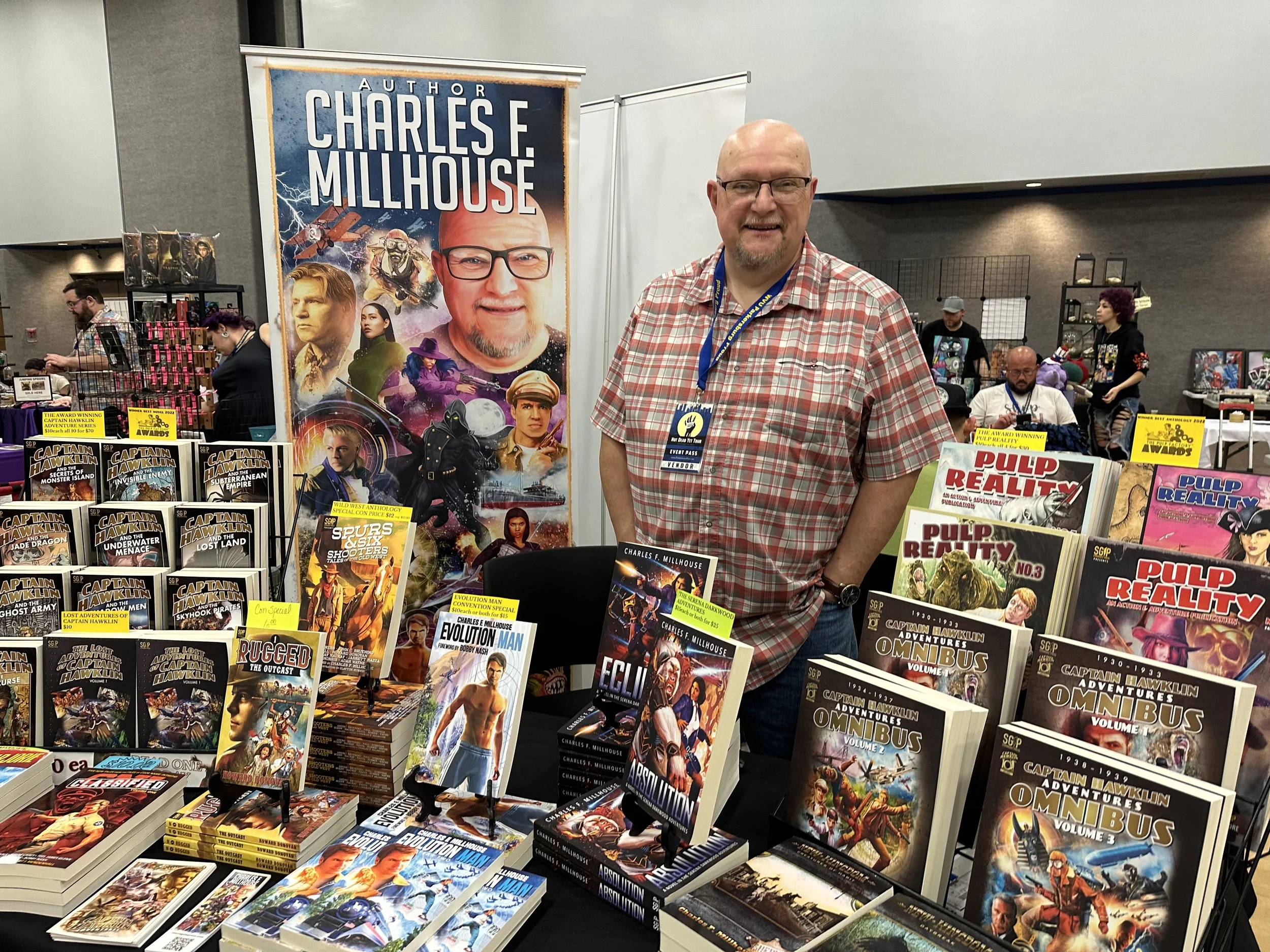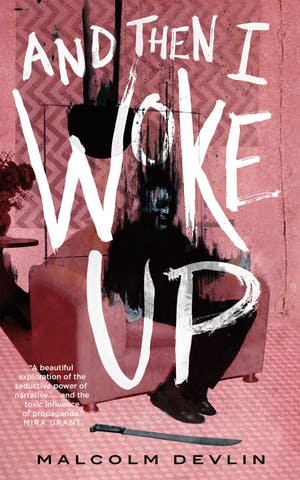Today I chat with writer Charles F. Millhouse. Charles is the author of more than thirty books in the Science Fiction/Fantasy/New Pulp genres. A storyteller/dreamer since childhood, Charles published his first book in 1999, and he hasn’t looked back. A pioneer in Independent Publishing, he patiently waited for technology to catch up with his visions and with the advent of Print on Demand and the eBook craze, Charles created Stormgate Press in 2006 to further his publishing endeavors.
Hi Charles! Thanks for taking some time to chat with me.
It’s my pleasure, thank you for asking me to participate.
You write across a variety of genres. What were some of your earliest influences in science fiction, fantasy, adventure, pulp, etc.?
My earliest influence in science fiction of course, for many people my age was Star Trek. I immersed myself in anything I could when it came to the final frontier. Of course, for my generation, TV was like a best friend and there was a lot of science fiction throughout the 1970s into the early 80s. And by the time I hit my teens I started to read a lot more, The first book I remember reading was Ringworld, by Larry Niven. But when I encountered DUNE when I was in high school, everything changed for me, including how and what science fiction I gravitated to.
From science fiction I found myself reading a lot of fantasy books, one of my favorites then and still now, is Elric of Melniboné and of course Conan, by Robert E. Howard (Great stuff!)
After I saw Raiders of the Lost Ark in 1981, my dad introduced me to the world of pulp. The Shadow, Zorro, the Spider, on and on. In the 1980’s you could find a lot of pulp in boxes under tables at comic shops I went to. The owner sold them to me cheap, and I didn’t turn down a deal. I discovered a lot of serials around that time, The Phantom Empire with Gene Autry my favorite.
Your longest-running series features a golden age / pulp adventure named Captain Hawklin. Can you tell us a bit about the genesis of the character and how the series has developed?
I first created Captain Hawklin in the early 1990s but then he was named Captain Thunder, but a friend of mine made me realize that that name was overused and could eventually get me sued lol, if I decided to publish it. It was his suggestion that I changed the name, and he threw out, “Just call him Hawklin, or something like that.” Originally, he was set in the early 1960s and an astronaut who ran a secret organization that had been travelling to other planets since the 1950s. From there he evolved into a 1930s pulp character. (I’m not sure why. I think it could have possibly been that I had an idea for a 30’s story, and that’s why he manifested into that.) I only intended on writing one book just to fulfill my need to write a pulp character. So, I wrote The Skyhook Pirates in 2004, And after I wrote the first couple chapters I saw the trailer for Sky Captain and the World of Tomorrow, and it kind of mirrored my work in progress. So, I held off writing the book until after I saw the movie thinking that—if it was a lot like what I had written I would change the story completely. I'm happy to say that even though there were some similarities I felt there was enough difference between the two characters. And sadly, Sky Captain never manifested into a series.
After I published the first book in 2012, I discovered there was this new movement called “New Pulp” and there were other people writing their own versions of pulp type characters. Skyhook Pirates sold really well, to my surprise, and I decided to write a second one. I'm happy to say that he has gotten a bit of a following over the years and the evolution of the character has really taken root not only by me, but from other pulp writers who have written the character, adding to his already growing vast history.
I think the first of your books that I read was the first Serena Darkwood science fiction adventure. I hear you’re working now on the third book in the series. How’s that going?
Thank you for reading Absolution. Serena doesn’t get the love that Captain Hawklin does. When I first wanted to be a published writer, I thought I would be a science fiction author, but as fate would have it, I became more of a pulp writer. Which I have embraced. But my love for science fiction is still in my heart. I'm currently outlining the third book for Serena Darkwood called “Capital” this will move the story forward immensely and will really put her in the middle of some galaxy changing events. Readers can look for “Capital” to release in the first quarter of 2026.
I’m always interested in hearing about a person’s creative process. Tell us a bit about how you develop a story. Does your process differ from genre to genre? Does it differ at all when you’re working on a short story versus a novel?
First, and I think this goes for most writers, I come up with the idea for a story. Most of my ideas come from driving in the car, and pitching them to my wife, who is great at helping me flush out ideas. Sometimes it's just a premise, other times it's a character and the story revolves around that character.
Sometimes the story begins one way and ends up totally different. My idea for my supernatural western trilogy “New Kingdom” started out as a mining colony in space and then took a sharp right turn to the Old West.
I scribble my ideas on index cards and keep them taped above my head when I'm writing.
I do this for novels and short stories. I write more from the seat of my pants than I do from an outline. My outlines generally are just a description of the characters and if I think of something that I really want to say in the story I'll jot it down on an index card.
I consider my first draft my outline, and from that outline I sculpt it into its final version. I always write my first draft at my desk. Working on the second draft and editing I tend to do on my iPad at work during breaks.
Speaking of short stories: I am intrigued by and loving your Stormgate Press Quick Reads series, which feels like it is meant to cover ALL THE GENRES! What inspired you to create this line and give it such diversity in content and tone?
I have to give credit where credit is due, and the idea for the Quick Read Books came from my wife. (The actual name Quick Read Books came from my cover designer Jeffrey Hayes.)
I have a banner that I sit up at my shows and on that banner are several characters that I created that had appeared only in the “Pulp Reality” series, and I had a lot of people at a show we were at in 2024 ask about characters like the “Purple Mystique” and “Night Vision.”
I knew I would never have time to write full-fledged novels with those characters, and it was my wife's idea to publish a series of short stories around 10,000 words and offer them on my table for $5, this would give patrons a chance to read my work who might not spend $10 or $15.00 for a novel and allow them the opportunity to see how I write. I’m happy to say it’s been a huge success.
I intend on keeping the series primarily on pulp style characters and manifesting them into the Captain Hawklin universe. Given time I will even work my barbarian character into that universe.
Finally, what do you have coming up that readers should keep an eye out for? And where will you be appearing in the near future?
I just released “Evolution Man Year Three” back in June of this year, I had great fun writing that book and the series is quickly becoming a favorite for returning readers.
On August 12th the third book in “The Lost Adventures of Captain Hawklin” will be available on Amazon, and its eBook will be available on several platforms. It is my intention to have copies exclusively on my table at PulpFest in August.
Readers can keep an eye out for more Quick Read Books; I'm currently writing another “Purple Mystique” story that will end this current wave of Quick Reads.
Also, for the Captain Hawklin fans who may be reading this interview, I am writing a new series of short stories set in the 1930s that are being released exclusively on my Patreon page.
My upcoming appearances:
On August 7th – 10th you can find me in Mars PA at PulpFest
For a complete list of my appearance, you can visit www.stormgatepress.com.
Thanks again for chatting, Charles! See you at Pulpfest!
Readers, it is not too late to register for and attend Pulpfest 2025 (THE pulp magazine-focused convention in the Northeast) and the other three conventions it hosts: FarmerCon (dedicated to the works of Philip Jose Farmer), ERBFest (dedicated to the works of Edgar Rice Burroughs) and DocCon (dedicated to all things Doc Savage related). Check out the Pulpfest website for registration and hotel information!









